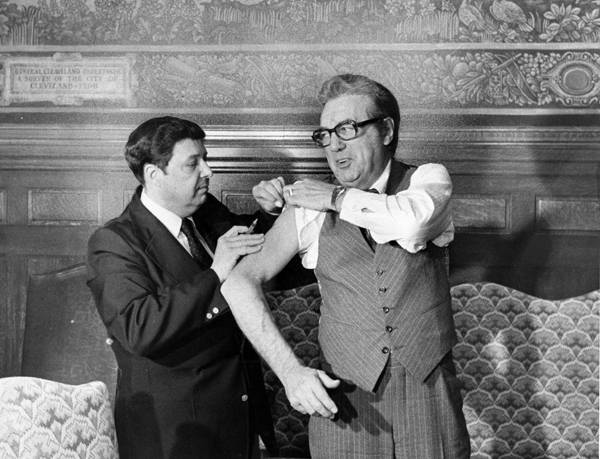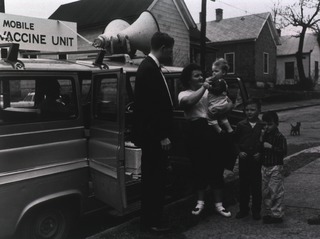Case File: Swine Flu (H1N1) Part 1
- Home
- Short Term Diseases
- Pandemic!
- Special Exhibitions
- Case File: Swine Flu (H1N1) Part 1

In January of 1976, several young soldiers at Fort Dix, New Jersey suddenly fell ill. It didn’t take long for scientists to connect the ailment with a new strain of H1N1, more commonly known as the Swine Flu. Most alarmingly, the strain shared several common elements with the 1918 strain that killed half a million in the U.S. alone.[i]
At the time the strain was identified, it had been suggested by scientists that swine flu, having last been seen in epidemic proportions during the 1918 pandemic, would become the next pandemic. The fear and devastation of 1918 had lurked beneath the surface of scientific research into disease for decades. And while there wasn’t overwhelming evidence to suggest that the new strain would be an efficient killer, there was no evidence that it wouldn’t be.[ii]
In this context, it makes sense that the U.S. prematurely launched a national immunization program. The program, which was shut down early, successfully inoculated 40 million Americans. However, serious problems quickly emerged: issuing a vaccine for the wrong virus, failure to calculate children’s dosages, and deaths due to a rare vaccine induced condition. These were among the more prominent causes for the program’s early shutdown.[iii]

In Wayne County, there was a focus on issues of disease and vaccination in Advertisements urging people to get vaccinated flooded local newspapers. Flu Clinics, where people could go for vaccines and information on preventing disease, popped up in schools and public venues such as the Freelander Theatre at the College of Wooster.[iv] A limitation on visitors was put in place at the Wooster Community Hospital to prevent the spread of the flu. Lastly, a truck, which was turned into a mobile vaccination clinic, was employed to help immunize people in rural areas of the county.[v]
[I]Neustadt, Richard E. and Fineberg, Harvey F. The Swine Flu Affair: Decision Making on a Slippery Disease. (Washington DC: National Academies Press, 1978.)
[ii]Ibid.
[iii]Ibid.
[iv] “Swine Flu Clinic Held.” Rittman Press. November 23, 1976. 1
[v] “Swine Flu Vaccine.” The West Salem Messenger. October 28, 1967. 3
Header: “Swine Flu Virus Particles.” The National Institute of Allergy and Infectious Disease. Accessed July 2, 2020. Online at Flickr.
Figure 1: Hatch, James A. “Mayor Ralph J. Perk Receives a Vaccination.” The Cleveland Memory Project, October 24, 1977.
Figure 2: “Mobile Immunization Clinic.” The National Library of Medicine. 1955.

